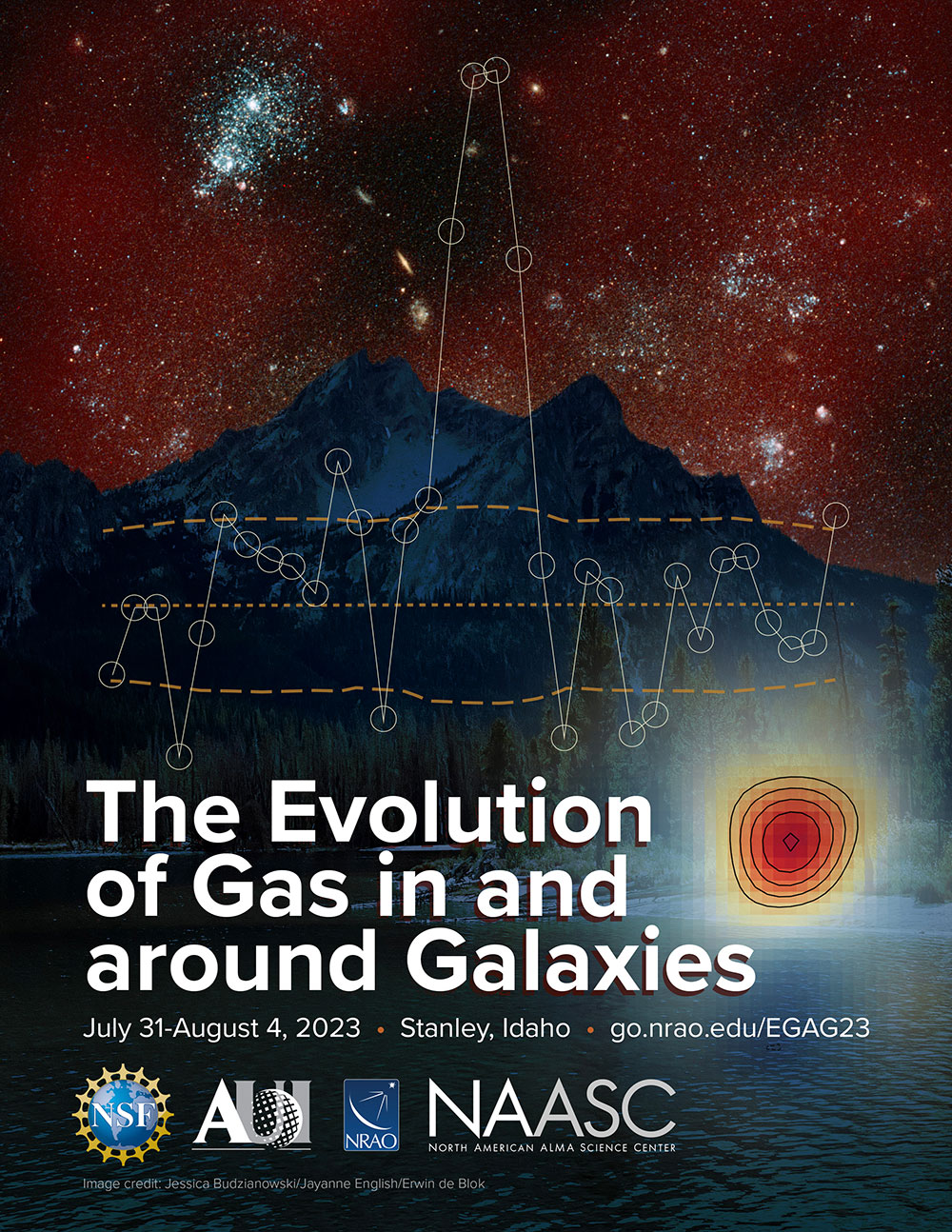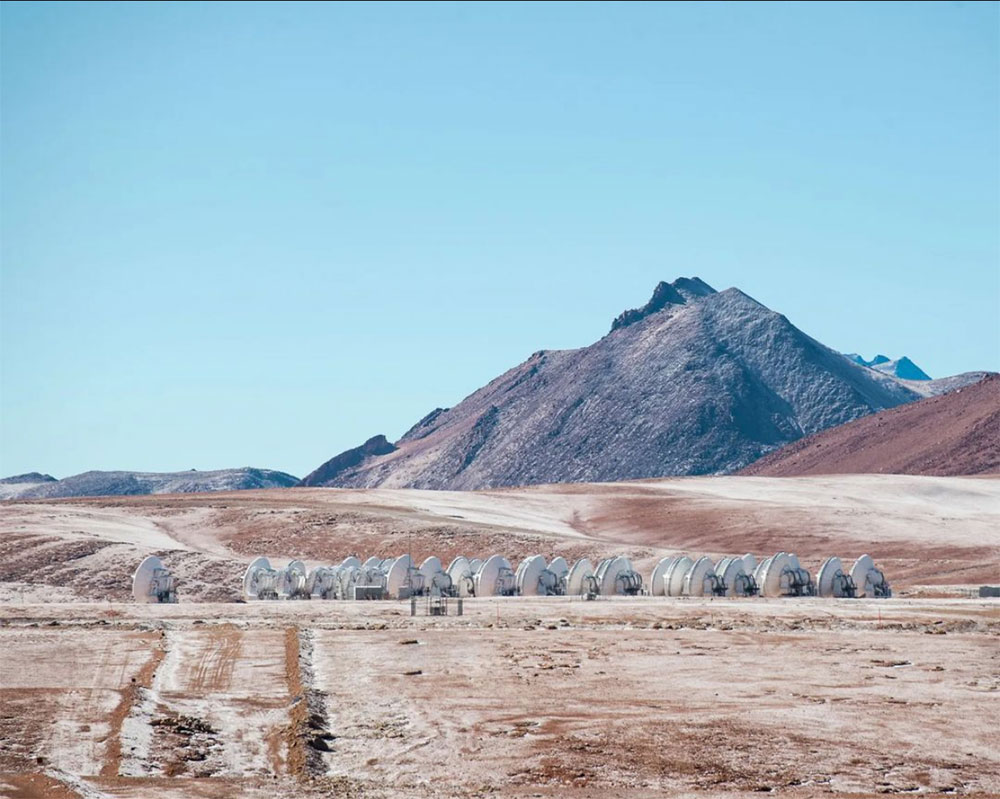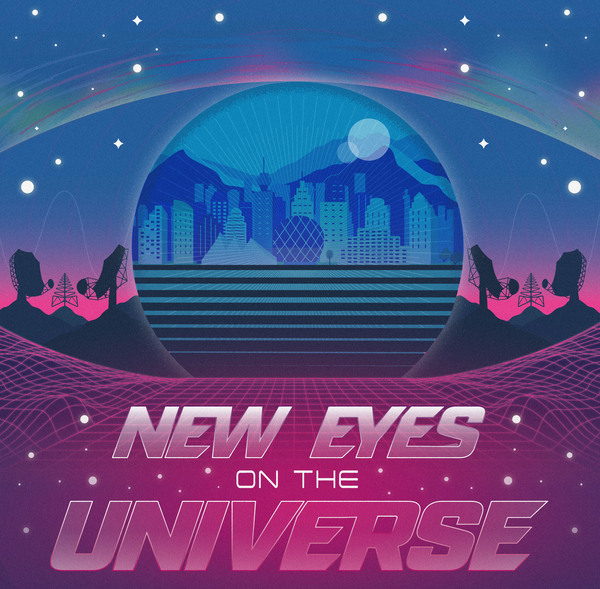NRAO eNews
Volume Vol#, Issue Iss#
Day# Month# Year#
NRAO eNews
Volume Vol#, Issue Iss# • Day# Month# Year#

Upcoming Events

Special Session: ALMA Status and Plans for Increased Capability
Jan 9, 2023 | Seattle, WA

Splinter Session: The NRAO Science Ready Data Products Initiative and Using the VLA Sky Survey
Jan 9, 2023 | Seattle, WA

ngVLA Special Session: Chemical Probes of Astrophysical Systems
Jan 11, 2023 | Seattle, WA

NRAO Town Hall
Jan 11, 2023 | Seattle, WA

19th Synthesis Imaging Workshop
Jun 13 - 21, 2023 | Charlottesville, VA

The Evolution of Gas in and around Galaxies
Jul 31 - Aug 4, 2023 | Stanley, ID
1st Announcement: The Evolution of Gas in and around Galaxies

[click to enlarge]
We invite you to consider the conference "The Evolution of Gas in and around Galaxies", which will take place 31 July to 4 August 2023, in the dark sky reserve of beautiful Stanley, Idaho, USA.
The goal of the conference is to compare and contrast the results of new HI 21cm, C+, and circumgalactic medium studies, made possible by the advent of a range of new telescopes, to compare them to theoretical predictions, and to place the new results in the context of galaxy evolution. The meeting will examine our understanding of the evolution of hydrogen in and around galaxies, by addressing the following questions:
- How does the HI content, morphology, and kinematics of galaxies evolve with redshift?
- How does the HI content of a galaxy relate to other galaxy properties (e.g., environment, SFR, stellar content, CGM properties, etc)?
- How does the gas accretion rate evolve with redshift? Is the SFR limited by the neutral hydrogen reservoir or the gas accretion rate, or both?
- How well do numerical simulations reproduce the gas properties, and redshift evolution, of galaxies and their CGM, and what does this tell us about the role of HI in galaxy evolution?
- How does the gas move from the CGM of galaxies to their disks, and transition from the ionized to the neutral phase, at different redshifts?
- What can observations of high-z galaxies learn from the wealth of detailed studies at z ~ 0?
Space for this meeting is limited to 60 participants due to venue constraints and a desire to keep discussions focused and lively. We aim to balance attendance between students, early-, mid-, and late-career astronomers, bringing together a diversity of experience, backgrounds, and interests. To help us achieve this balance, we request that all applicants complete an Expression of Interest, briefly describing their reasons for wishing to attend the meeting. The organizing committee will begin reviewing the Expressions of Interest on 15 December 2022, and will continue either until 31 January 2023, or until all available spaces are filled. Applicants would be invited to register, based on this review process. We emphasize that registration will be invitation-only. We encourage all interested participants to complete their Expression of Interest as early as possible, as spaces may fill quickly. In particular, participants who will be traveling internationally and who will need to apply for US visas are urged to complete the expression of interest by 15 December.
The Expression of Interest form is now open on the meeting website, which also provides further information on the venue, timelines, and logistics. For additional
information, please write to the meeting e-mail address.
This will be an entirely in-person event, with no online contributions. The organizers are committed to providing a friendly and safe environment where diversity and inclusivity are valued.
This meeting is sponsored by the North American ALMA Science Center of the National Radio Astronomy Observatory, a facility of the National Science Foundation operated under cooperative agreement by Associated Universities, Inc.
We hope to see you in Idaho in the summer of 2023!
The Organizing Committee: R. Dave, K. Devine, J. Donovan Meyer, J. van Gorkom, N. Kanekar, K. Prairie, M. Putman.
Host an NRAO Community Day Event
The NRAO is pleased to accept applications again from institutes in North America to host a Community Day Event (CDE) between mid-February and mid-September 2023. CDEs are one- to two-day events designed in cooperation with host institutions during which NRAO staff give presentations on the capabilities of the Very Large Array (VLA), the Atacama Large Millimeter/submillimeter Array (ALMA), and the Very Long Baseline Array (VLBA), and tutorials on proposal preparation, observation preparation, and/or data reduction and data products.
The CDE agenda will be largely driven by the goals of the host institution and the expected participants. There will be no cost to the host institution. We ask only that you engage a minimum of 15 participants, each of whom is expected to bring a modern laptop capable of running the required software, and provide a sufficiently large meeting room with typical audiovisual capabilities (projector) and Wi-Fi. To reach this minimum, consider inviting colleagues from other institutions in your area.
To apply to host an NRAO CDE and for further information, please review the CDE website or contact Frank Schinzel.
ALMA Program News

Sergio Otarola Photography
[click to enlarge]
ALMA Status: Cycle 9
ALMA is in compact configurations. Cycle 9 data acquisition began 30 September 2022. The Joint ALMA Observatory released a statement on 2 November regarding a recent cyberattack that has affected ALMA services and observations. Please see updates at the ALMA Science portal.
American Astronomical Society (AAS) Meeting 241 Special Session
A Special Session titled ALMA Status and Plans for Increased Capability has been scheduled for the 241st meeting of the American Astronomical Society (AAS) in Seattle, Washington at 2:00-3:30 pm PST in Ballroom 6 on Monday 9 January 2023. A new paper describing the upgrade is available. See Carpenter, Brogan, Iono, & Mroczkowski (2022), The ALMA2030 Wideband Sensitivity Upgrade (ALMA Memo 621, arXiv:2211.00195).
This Special Session will describe for the membership ALMA news, capabilities, and expectations for ALMA performance and science in the next few years, and plans for its upgrade in the timeframe of this decade. The ambitious ALMA2030 Wideband Sensitivity Upgrade seeks to at least double, and eventually quadruple the correlated bandwidth of the ALMA Observatory’s antennas. The 1.3mm band receiver (Band 6v2) will be the first receiver upgraded as a part of the ALMA2030 Development Roadmap. ALMA North America Program Scientist Brogan noted that the receiver was chosen for the first upgrade because “Band 6 is currently ALMA’s most used band in terms of the number of hours proposed each cycle. We see more ALMA publications reporting results from this band than any other in every observing year.” As of this writing, over 1600 of ALMA's 2925 published papers used the 1.3mm band.
New frequency windows (Bands) are coming. Preliminary acceptance on ALMA Band 1 receivers covering 35-50GHz is scheduled to complete soon, followed by science verification in preparation for the planned Cycle 10 offering. Prototype Band 2 (67-116 GHz) cold cartridge assemblies have been tested in the ALMA cryostat at the NRAO Central Development Laboratory. With these bands, ALMA will complete its frequency coverage of the millimeter window.
ALMA's bandwidth will be increased to enhance continuum sensitivity even as its line sensitivity is increased via receiver upgrades, an upgraded correlator and upgrades of the systems connecting them. Higher resolution imaging is being explored, both on the exceptional site and as part of the extremely long baseline imaging arrays. The Special Session will feature science talks presenting a wide range of recent, exciting ALMA results and will highlight the support available to the community from the North American ALMA Science Center at the NRAO.
ALMA Development Study Proposals
For Fiscal Year 2023 (FY23), four highly-ranked development study proposals were funded and begun in FY23. These four proposals include two hardware and two software studies. See the ALMA/NA Development website for details.
The funding outcome follows closely the rankings resulting from discussion within the review panel. The four funded proposals were chosen from among the eight which were received from 26 prospective investigators at 10 institutions. Proposals were reviewed by a panel of ten external referees. The funded proposals were well-received by the reviewers, fit within the Development Study program budget, and address the strategic goals of North American ALMA Development and the ALMA2030 goals very well. The four most highly-ranked proposals involve fourteen investigators at five institutions. The set was comprised of two hardware studies and two software studies.
Hardware-oriented Studies
- Wideband Isolators for Submillimeter Astronomy led by L. Zeng (SAO).
- Wideband InP and GaAs Intermediate-Frequency Low Noise Amplifiers led by A. Densmore (NRC).
Technique-oriented Studies
- A Detailed Characterization of Spectral Regridding and Noise in the WSU Era led by S. Andrews (SAO).
- Energetic Phenomena on the Sun: Enabling Flare Observations with ALMA: Support for a Community Solar Workshop led by. T. Bastian (NRAO)
To focus on the Wideband Sensitivity Upgrade (ALMA Memo 621), we will not issue a study call for FY2024.
ALMA at 10-years: Past, Present, and Future Conference
To commemorate its first decade of science operations, the ALMA partnership is organizing a conference in Puerto Varas, Chile on 4-8 December 2023 that will take a look back at the Observatory’s accomplishments, highlight its latest results, and look forward to future technical developments. More information on the conference will be posted on the conference website as it becomes available. Registration will open in early 2023.
ngVLA Project News

[click to enlarge]
New Eyes on the Universe: SKA & ngVLA Conference
This conference will review, discuss, and extend the cutting-edge science opportunities enabled by the unprecedented Square Kilometre Array–ngVLA coverage across three decades of radio frequency. The conference will be held in-person 1-5 May 2023 in Vancouver, Canada at the Pan Pacific Hotel. Talks will be recorded and made widely available. Abstract submission and financial support requests will open on 2 December at the conference website.
NRAO Signs Cooperative Agreement with UNAM
The NRAO and the Universidad Nacional Autónoma de México (UNAM) have signed a memorandum of understanding establishing their collaboration on ngVLA development. See the press release for details.
Observing Quiescent X-ray Binaries on the Edge of Detection

VLA images at 10 GHz of A0620-00 (crosshairs) from a three-month campaign. (a) Clear non-detection. (b) 7σ detection. (c) Unclear non-detection. Adapted from dePolo et al. (2022).
[click to enlarge]
Black hole X-ray binaries (BHXBs) provide unique opportunities to watch stellar-mass black holes evolve through cycles of outburst and quiescence on timescales of decades or longer. Monitoring campaigns of BHXBs help characterize radio jet behavior, informing the nature of transient sources unveiled by radio sky surveys. While there is much research into BHXBs during outbursts, there are very few systems with radio detections of their relativistic jets while in quiescence, and even fewer quiescent systems with radio coverage in the time domain. A0620-00 is one of the rare BHXBs with radio detections during quiescence (Carotenuto et al. 2022; Gallo et al. 2006). It is a singular target for a radio monitoring campaign: being the nearest black hole and one of the least-luminous known BHXBs, it provides an opportunity to investigate variability at the fainter end of BHXBs.
In dePolo et al. (2022), we analyzed 31 VLA observations of A0620-00, achieving 37+ hours of science time. Our aim was to quantify the variability of the radio jet launched by A0620-00, inspired by the analysis of V404 Cygni performed by Plotkin et al. (2019). V404 Cygni is one of the most luminous BHXBs in quiescence, and it is the only other quiescent BHXB with substantial constraints on its radio variability. By analyzing the behavior of A0620-00 and comparing it to V404 Cygni, we effectively bookend the range of variability expected from quiescent BHXBs.
The figure shows the variable nature of the jet from A0620-00, which straddles the edge of VLA detections for these short observations and highlights the need for improved sensitivity. During the monitoring campaign, A0620-00 was detected ~75% of the time and dipped below detection thresholds ~25% of the time. A statistical analysis found that the variable behavior of A0620-00 is consistent with a damped random walk, similar to V404 Cygni, possibly the result of shocks propagating through a compact, steady jet. We also found tentative evidence that quiescent radio jets are less variable at lower luminosities.
With ten times the sensitivity of the VLA, the next generation Very Large Array (ngVLA) would enable routine detections of low-luminosity radio jets from systems like A0620-00 and also enable detections of even lower-luminosity jets from other quiescent BHXBs. Excitingly, in addition to probing variability on week-to-decade timescales, the ngVLA would enable searches for short-term variability from A0620-00, such as radio flares on minute-to-hour timescales. Improved constraints on radio jet variability would also inform ngVLA strategies for identifying new populations of quiescent BHXB candidates via their radio emission (e.g., Urquhart et al. 2020).
Since 2015 the acronym ngVLA has appeared in 900+ publications indexed in the SAO/NASA Astrophysics Data System. This article continues a regular feature intended to showcase some of those publications. We are especially interested in showcasing work done by early-career researchers. The collection of showcase articles can be viewed online. Anyone wishing to volunteer to author a feature should contact Joan Wrobel.
Volunteers Needed to Serve on VLA, GBT & VLBA Science Review Panels

Members of NRAO’s Science Review Panels (SRP) play a very important role in identifying the Science Programs for these world-leading radio telescopes.
Being a reviewer could help you to:
- Learn what science other astronomers are interested in;
- Get a sense of what makes the most compelling proposals;
- Build your group of professional contacts and potential collaborators;
- Understand the review process for a major observatory.
If you are interested, please apply to be a volunteer SRP member!
AAS 241 Opportunity: Roundup Science Highlights
NRAO's Public Information & News Team is producing roundup science highlights for GBO, VLA, VLBA, and ALMA during AAS 241. If you are presenting at AAS 241 and would like your science considered for a highlight, please email your abstract (and if applicable, your paper or arXiv link) to Amy Oliver by no later than December 10.
Recent Media Releases
|
NRAO Signs Cooperative Agreement with UNAM For Development of the Next Generation Very Large Array |
|
|
Update: ALMA Services Affected by Cyberattack |
|
|
Baseline #13 – Sagittarius A*: Monster in the Milky Way |
From the Archives
Ellen Bouton

[click to enlarge]
About this month's photo: In June 1963, NRAO acquired two blue-bodied diesel buses with silver tops to carry the increasing number of curious visitors to the telescopes in Green Bank. According to the June 1963 issue of The Observer, NRAO had just "struck another blow against man-made radio noise. Tourist cars with their noisy ignition systems will sit in the parking lot while their occupants take a care-free tour of the site and facilities." Proudly showing off the new buses are, left to right, Wally Oref, Clifford Barkley, Dorothy Drake, and Merritt Gum.
From the Archives is an ongoing series illustrating NRAO and U.S. radio astronomy history via images selected from our collections of individuals' and institutional papers. If readers have images they believe would be of interest to the Archives, please contact Ellen Bouton.

